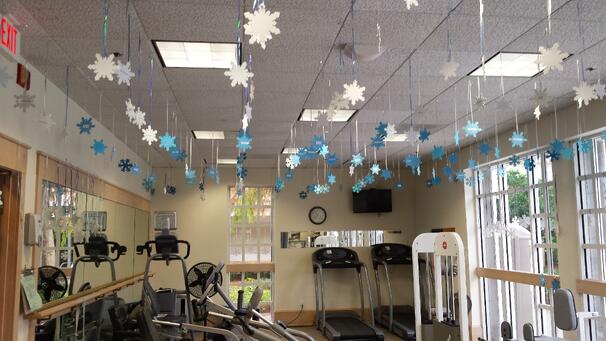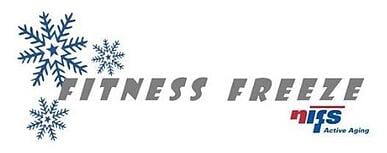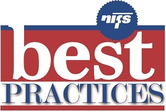I’ve written in the past about how consistent tracking of participation data in your community fitness center can help improve and evolve your senior living fitness program over time. Here is a two-part follow up series on what you are missing if you aren’t tracking data from your program. These observations are built entirely on NIFS’ experience doing this work for our senior living client communities.
Prevent the Participation Dip During the Holidays
Did your community fitness program experience a dip in participation during the busy holiday season? You’re in good company—we used to see that as well.
But in 2014, we were able to reverse the trend thanks to a custom program designed to motivate residents to move more when exercise often takes the backseat to holiday parties and family gatherings.
It all starts with collecting the right data. For example, we knew from our 2013 reporting that there was a marked decline in participation from November to December in exercise program participation. We saw this as an opportunity to do better, so we built a program called Fitness Freeze to prevent that specific dip in participation we see over those two months. Following the program, we evaluated the effectiveness of the program design against our desired outcomes. Here’s what we found:
Total visits: An 11% increase in total visits to the fitness center and group exercise classes from November to December 2014 compared to the same months in 2013.
New members: An 8% increase in new members signing up to participate in the fitness center from November to December 2014 compared to the same months in 2013.
Appointment volume: A 26% increase in the number of appointments conducted from November to December 2014 compared to the same months in 2013.
We know that residents are already busy and preoccupied in December, so we wanted to make the program as simple as possible for them to be successful. Here are just a few of the design elements that contributed to Fitness Freeze’s success:
No elaborate tracking logs or point system: Residents don’t need one more thing on their “to-do” list, so keep it simple! Residents had to sign-in as they normally do to the fitness center and we took care of the rest. Our goal was to help residents be consistent in visits, even if their workout time was shorter than normal. If a resident exercised for at least 10 minutes, three times a week, they earned a snowflake that hung in the fitness center with their name on it.

Make it visual: The individual snowflakes were a great way to decorate the fitness center with some seasonal cheer and residents LOVED being able to show off to visiting family and friends how many snowflakes they earned. It was eye catching, provided an easy avenue for discussion, and offered a constant reminder to the participants to stay on track.
Recruit, recruit, recruit: As resident talk about the snowflakes on display in the fitness center spread throughout the community, residents who weren’t fitness center members yet learned that they could earn a snowflake just by joining in December. It created a fun and easy way for residents who might be on the fence about joining to take the final step and feel included among the ranks of our regulars.
The Fitness Freeze was born out of our constant efforts to do better, which include a strong focus on data as well as routine evaluation of program effectiveness. Once we identified holiday-time as an opportunity for improvement, we built a tool to address that challenge. It’s a tangible and practical example of a targeted campaign to boost the participation in a given month.
Watch for part 2 of this blog to learn about the value of evaluating data trends in brand-new fitness programs as well as in well-established programs from year to year.
Checkout more great programming from NIFS Fitness Management with our Best Practice Series.


